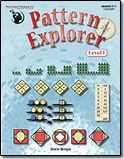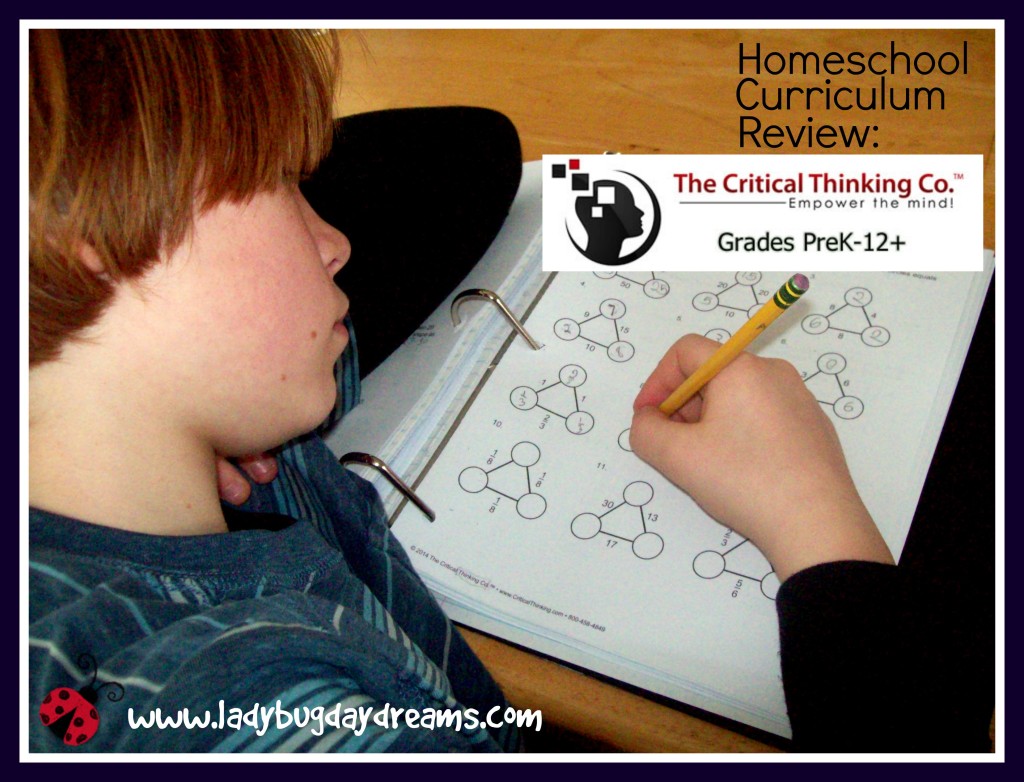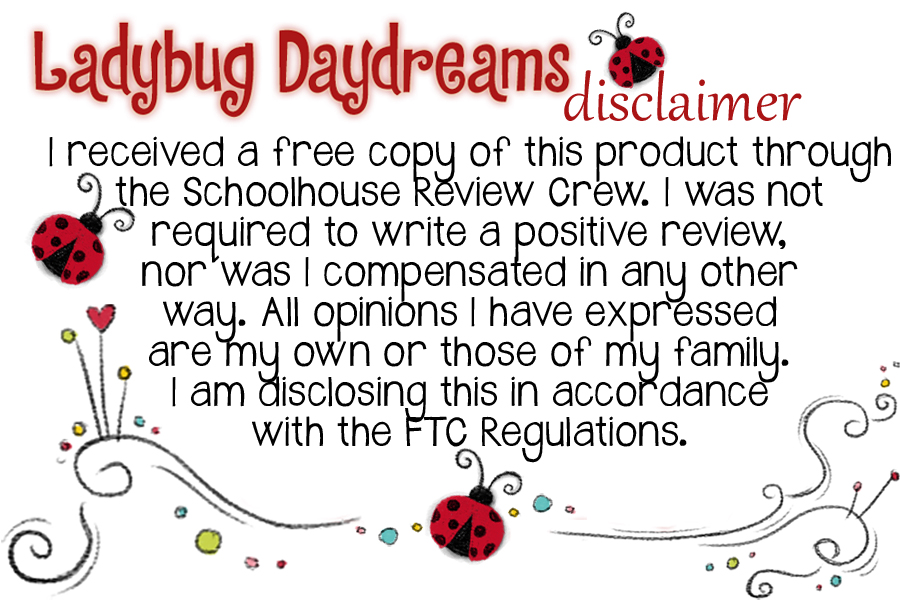Seahawk is really strong in math. He always has been. So sometimes it’s hard to find things that keep him interested and challenged; the basic grade level math program doesn’t normally do it. So when I heard about The Critical Thinking Co. through the Schoolhouse Review Crew, I started looking at some of their books. When I found out that Pattern Explorer was one of the offerings, I knew that would be just right for Seahawk. He’s always loved searching for patterns, but I’ve never had an easy time finding challenging pattern activities for him (red, green, yellow, red, green, yellow just isn’t difficult for a 5th grader). Pattern Explorer turned out to be just the thing.
What It Is

Pattern Explorer is a consumable workbook. The copyright allows you to make up to 35 copies for a single classroom or family, so it’s really budget friendly if you’re working with a group. Within the workbook are five different kinds of activities: Pattern Predictor, Equality Explorer, Sequence Sleuth, Number Ninja, and Function Finder. The activities in the book are arranged in the same order, eight times each. This gives a total of 40 lessons, each slightly more difficult than the last. At the end of the book is a section offering hints for solving the problems, and after that are the solutions.
Pattern Predictor starts by showing a pattern – not necessarily a repeating pattern, just a pattern. In the first few lessons, they’re separated into stages, and the student’s job is to determine what the pattern will look like at future stages. They answer questions about a variety of stages, but aren’t asked to draw the stages.
Equality Explorer shows drawings of scales. On one side of the scale is a number inside a shape. On the other side are a variety of shapes. The goal here is to determine the value of the shapes based on the given – the number on the other side. This is great practice for algebra, which Seahawk will begin exploring in the next year or two as he looks to enter middle school soon.
Sequence Sleuth is a lot like Pattern Predictor. The student is given a pattern, but this time the pattern doesn’t get bigger; it rotates or changes in some way that repeats. Questions asked are very similar to those in the Pattern Predictor activity.
Number Ninja deals with things like fractions, order of operations, and general puzzle solving. There’s really no good way to explain it because the activities are so diverse, so let me offer an example of one instead:
__+__x__=21
Seahawk had to figure out what number went into each blank. (The answer, in case you’re curious, is 1 + 5 x 4 = 21. If you think I’m wrong and the answer to that problem would be 24, remember your order of operations.)
Function Finder were Seahawk’s least favorite activities by far. In it, you’re given a number and a rule – multiple by 7, for example. Then you’re asked “if you put 8 in, what comes out?” The answer, in this example, is 56. Then, you’re given a chart with the ins and outs; the goal there is to find the rule.
Use
To start with, I pulled the pages out of the workbook; their perforations made easy work of this. I punched holes in the pages and placed them in Seahawk’s binder. I’ve found it’s easier for us to keep all the schoolwork, even workbooks, in the binders. This way we only have one thing to bring out in the morning instead of 4 or 5. (We store our schoolbooks in the sewing room, but “do” school at the dining room table, on the opposite side of the house.)
I’d intended this to be a supplement to our regular math, but it didn’t work out that way. It ended up taking the place of it. For a finite, consumable book, I was okay with that. Seahawk may not be “moving forward” in his grade, but he’s working hard and exploring new areas of math which will help him as he progresses later. Because it took the place of the other math program, I had him use it four or five times a week. This worked really well for us, but I can see how Pattern Explorer would be a great supplement, too.
Our Opinion
We really enjoyed working with Pattern Explorer, which is available for $14.99. It definitely challenged Seahawk (and me, as his teacher/helper). Considering the recommended age for this book is Grades 5-7 (which he’s at the bottom end of), this isn’t surprising, but it was still welcome. It was really good for him to have something new and different for a while, and to have it not just be a “easy way out” of math for that to happen was great. We heartily recommend this book for kids who want something different for a while, or if you just want to push your child(ren) in a new way for a period of time.
Members of the Schoolhouse Review Crew reviewed all sorts of different products from The Critical Thinking Co. in a variety of subjects for all age ranges. Make sure to click the banner below to check out some of the other great offerings from this company.
Blessings,
The Critical Thinking Co. is on Facebook, Google+, Twitter, and Pinterest.




